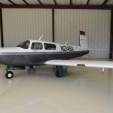Planning descents
-
Members Online
- KSMooniac
- exM20K
- PT20J
- MikeOH
- BDPetersen
- BeeBuzzbee
- turbofan
- amillet
- hammdo
- atpdave
- richardbrochu27
- Rotorhead
- Stealth Mooney
- Jose Jo
- AndreiC
- TheBearFlies
- Bartman
- Rick Junkin
- ElkoRandy20J
- fsuflyer
- Dgeyer
- Buckeyechuck
- varlajo
- marcusku
- Yanyen
- redbaron1982
- bencpeters
- Guillaume
- takair
- TNIndy
- ohdub
- AF M20J
- AJ88V
- Hank
- Aaviationist
- 0TreeLemur
- EarthboundMisfit
- M20F
- hbpil


Recommended Posts
Join the conversation
You can post now and register later. If you have an account, sign in now to post with your account.